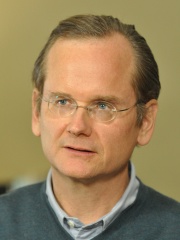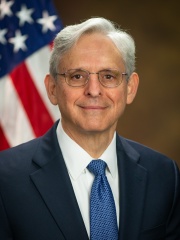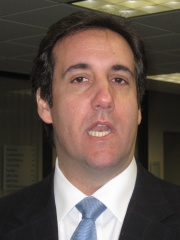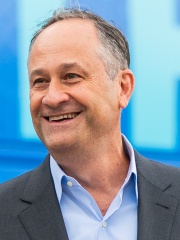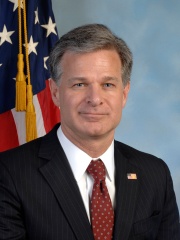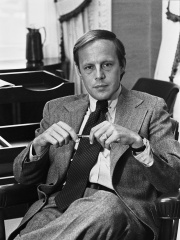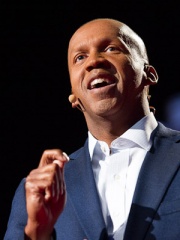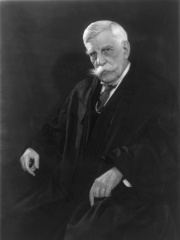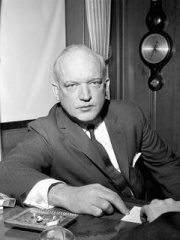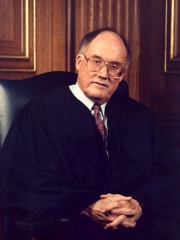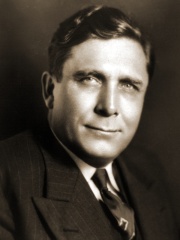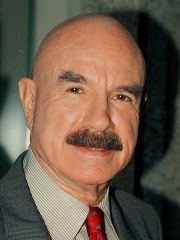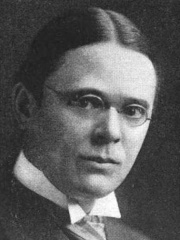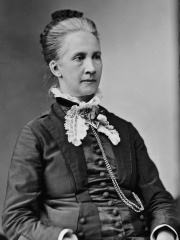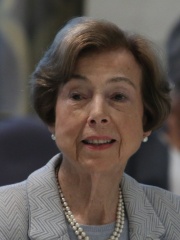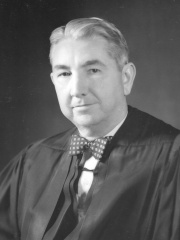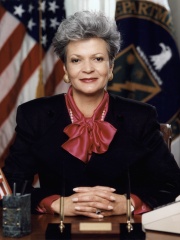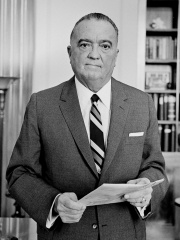
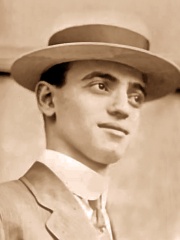

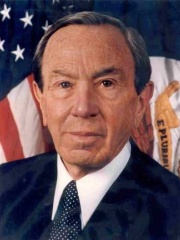

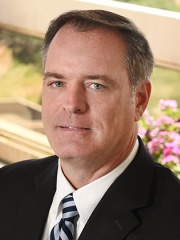
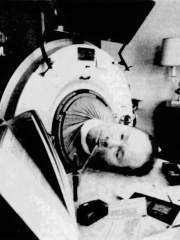
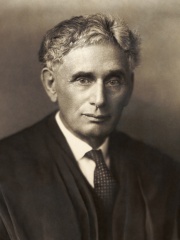
The Most Famous
LAWYERS from United States
This page contains a list of the greatest American Lawyers. The pantheon dataset contains 136 Lawyers, 31 of which were born in United States. This makes United States the birth place of the most number of Lawyers.
Top 10
The following people are considered by Pantheon to be the top 10 most legendary American Lawyers of all time. This list of famous American Lawyers is sorted by HPI (Historical Popularity Index), a metric that aggregates information on a biography’s online popularity. Visit the rankings page to view the entire list of American Lawyers.

1. J. Edgar Hoover (1895 - 1972)
With an HPI of 69.42, J. Edgar Hoover is the most famous American Lawyer. His biography has been translated into 56 different languages on wikipedia.
John Edgar Hoover (January 1, 1895 – May 2, 1972) was an American law-enforcement administrator who served as the final Director of the Bureau of Investigation (BOI) and the first Director of the Federal Bureau of Investigation (FBI). President Calvin Coolidge first appointed Hoover as director of the BOI, the predecessor to the FBI, in 1924. After 11 years in the post, Hoover became instrumental in founding the FBI in June 1935, where he remained as director for an additional 37 years until his death in May 1972 – serving a total of 48 years leading both the BOI and the FBI and under eight Presidents. Hoover expanded the FBI into a larger crime-fighting agency and instituted a number of modernizations to policing technology, such as a centralized fingerprint file and forensic laboratories. Hoover also established and expanded a national blacklist, referred to as the FBI Index or Index List. Later in life and after his death, Hoover became a controversial figure as evidence of his secretive abuses of power began to surface. He was also found to have routinely violated both the FBI's own policies and the very laws which the FBI was charged with enforcing, and to have collected evidence using illegal surveillance, wiretapping, and burglaries. Hoover consequently amassed a great deal of power and was able to intimidate and threaten political figures, including high-ranking ones.

2. Leo Frank (1884 - 1915)
With an HPI of 64.02, Leo Frank is the 2nd most famous American Lawyer. His biography has been translated into 24 different languages.
Leo Max Frank (April 17, 1884 – August 17, 1915) was an American factory superintendent and lynching victim. He was convicted in 1913 of the murder of a 13-year-old employee, Mary Phagan, in Atlanta, Georgia. Frank's trial, conviction, and unsuccessful appeals attracted national attention. His kidnapping from prison and lynching became the focus of social, regional, political, and racial concerns, particularly regarding antisemitism. Modern researchers generally agree that Frank was wrongly convicted. Born to a Jewish-American family in Texas, Frank was raised in New York and earned a degree in mechanical engineering from Cornell University before moving to Atlanta in 1908. Marrying in 1910, he involved himself with the city's Jewish community and was elected president of the Atlanta chapter of the B'nai B'rith, a Jewish fraternal organization, in 1912. At that time, there were growing concerns regarding child labor at factories. One of these children was Mary Phagan, who worked at the National Pencil Company where Frank was director. The girl was strangled on April 26, 1913, and found dead in the factory's cellar the next morning. Two notes, made to look as if she had written them, were found beside her body. Based on the mention of a "night witch", they implicated the night watchman, Newt Lee. Over the course of their investigations, the police arrested several men, including Lee, Frank, and Jim Conley, a janitor at the factory. On May 24, 1913, Frank was indicted on a charge of murder and the case opened at Fulton County Superior Court, on July 28. The prosecution relied heavily on the testimony of Conley, who described himself as an accomplice in the aftermath of the murder, and who the defense at the trial argued was, in fact, the perpetrator of the murder. A guilty verdict was announced on August 25. Frank and his lawyers made a series of unsuccessful appeals; their final appeal to the Supreme Court of the United States failed in April 1915. Considering arguments from both sides as well as evidence not available at trial, Governor John M. Slaton commuted Frank's sentence from capital punishment to life imprisonment. The case attracted national press attention and many reporters deemed the conviction a travesty. Within Georgia, this outside criticism fueled antisemitism and hatred toward Frank. On August 16, 1915, he was kidnapped from prison by a group of armed men, and lynched at Marietta, Mary Phagan's hometown, the next morning. The new governor vowed to punish the lynchers, who included prominent Marietta citizens, but nobody was charged. In 1986, the Georgia State Board of Pardons and Paroles issued a pardon in recognition of the state's failures—including to protect Frank and preserve his opportunity to appeal—but took no stance on Frank's guilt or innocence. The case has inspired books, movies, a play, a musical, and a TV miniseries. The African American press condemned the lynching, but many African Americans also opposed Frank and his supporters over what historian Nancy MacLean described as a "virulently racist" characterization of Jim Conley, who was Black. His case spurred the creation of the Anti-Defamation League and the resurgence of the Ku Klux Klan.

3. John F. Kennedy Jr. (1960 - 1999)
With an HPI of 60.72, John F. Kennedy Jr. is the 3rd most famous American Lawyer. His biography has been translated into 41 different languages.
John Fitzgerald Kennedy Jr. (November 25, 1960 – July 16, 1999), often referred to as John-John or JFK Jr., was an American attorney, journalist, and magazine publisher. He was a son of John F. Kennedy, the 35th president of the United States, and First Lady Jacqueline Kennedy and a younger brother of U.S. Ambassador Caroline Kennedy. Three days after his father was assassinated, he rendered a final salute during the funeral procession on his third birthday. From his childhood years at the White House, Kennedy was the subject of much media scrutiny and later became a popular social figure in Manhattan. Trained as a lawyer, he worked as a New York City assistant district attorney for almost four years. In 1995, Kennedy launched George magazine, using his political and celebrity status to publicize it. He died in a plane crash in 1999 at the age of 38.

4. Warren Christopher (1925 - 2011)
With an HPI of 57.68, Warren Christopher is the 4th most famous American Lawyer. His biography has been translated into 42 different languages.
Warren Minor Christopher (October 27, 1925 – March 18, 2011) was an American lawyer, diplomat and politician. During Bill Clinton's first term as president, he served as the 63rd United States Secretary of State. Born in Scranton, North Dakota, Christopher clerked for Supreme Court Justice William O. Douglas after graduating from Stanford Law School. He became a partner in the firm of O'Melveny & Myers and served as Deputy Attorney General from 1967 to 1969 under President Lyndon B. Johnson. He served as Deputy Secretary of State under President Jimmy Carter, holding that position from 1977 to 1981. In 1991, he chaired the Christopher Commission, which investigated the Los Angeles Police Department in the wake of the Rodney King incident. During the 1992 presidential election, Christopher headed Bill Clinton's search for a running mate, and Clinton chose Senator Al Gore. After Clinton won the 1992 election, Christopher led the Clinton administration's transition process, and he took office as Secretary of State in 1993. As Secretary of State, Christopher sought to expand NATO, broker peace in the Israeli–Palestinian conflict, and pressure China regarding its human rights practices. He also helped negotiate the Dayton Agreement, which ended the Bosnian War. He left office in 1997, and was succeeded by Madeleine Albright. Christopher oversaw the Gore campaign's Florida recount effort in the aftermath of the disputed 2000 presidential election. At the time of his death in 2011, he was a senior partner at O'Melveny & Myers in the firm's Century City, California, office. He also served as a professor at the University of California at Los Angeles.
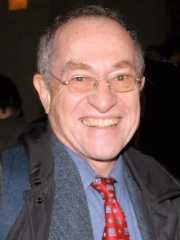
5. Alan Dershowitz (b. 1938)
With an HPI of 55.24, Alan Dershowitz is the 5th most famous American Lawyer. His biography has been translated into 29 different languages.
Alan Morton Dershowitz ( DURR-shə-wits; born September 1, 1938) is an American lawyer and law professor known for his work in U.S. constitutional law and American criminal law. From 1964 to 2013, he taught at Harvard Law School, where he was appointed as the Felix Frankfurter Professor of Law in 1993. Dershowitz is a regular media contributor, political commentator, and legal analyst. Dershowitz has taken on high-profile and often unpopular causes and clients. As of 2009, he had won 13 of the 15 murder and attempted murder cases he handled as a criminal appellate lawyer. Dershowitz has represented such celebrity clients as Mike Tyson, Patty Hearst, Leona Helmsley, Julian Assange, and Jim Bakker. Major legal victories have included two successful appeals that overturned convictions, first for Harry Reems in 1976, then in 1984 for Claus von Bülow, who had been convicted of the attempted murder of his wife, Sunny. In 1995, Dershowitz served as the appellate adviser on the murder trial of O. J. Simpson, part of the legal "Dream Team", alongside Johnnie Cochran and F. Lee Bailey. He was a member of Harvey Weinstein's defense team in 2018 and of President Donald Trump's defense team in his first impeachment trial in 2020. He was a member of Jeffrey Epstein's defense team and helped to negotiate a 2006 non-prosecution agreement on Epstein's behalf. Dershowitz is the author of several books about politics and the law, including Reversal of Fortune: Inside the von Bülow Case (1985), the basis of the 1990 film; Chutzpah (1991); Reasonable Doubts: The Criminal Justice System and the O. J. Simpson Case (1996); The Case for Israel (2003); and The Case for Peace (2005). His two most recent works are The Case Against Impeaching Trump (2018) and Guilt by Accusation: The Challenge of Proving Innocence in the Age of #MeToo (2019). An ardent supporter of Israel, he has written several books on the Arab–Israeli conflict.

6. Bill Gates Sr. (1925 - 2020)
With an HPI of 54.52, Bill Gates Sr. is the 6th most famous American Lawyer. His biography has been translated into 19 different languages.
William Henry Gates II (November 30, 1925 – September 14, 2020), better known as Bill Gates Sr., was an American attorney, philanthropist, and civic leader. He was the founder of the law firm Shidler McBroom & Gates (a predecessor of K&L Gates), and also served as president of both the Seattle King County and Washington State Bar associations. He was the father of Bill Gates, co-founder of Microsoft.

7. Robert Bilott (b. 1965)
With an HPI of 52.66, Robert Bilott is the 7th most famous American Lawyer. His biography has been translated into 23 different languages.
Robert Bilott (born August 2, 1965) is an American environmental attorney from Cincinnati, Ohio. Bilott is known for the lawsuits against DuPont on behalf of plaintiffs injured by waste dumped in rural communities in West Virginia. Bilott has spent more than twenty years litigating hazardous dumping of the chemicals perfluorooctanoic acid (PFOA) and perfluorooctanesulfonic acid (PFOS). Bilott's litigation was the foundation for a memoir titled Exposure: Poisoned Water, Corporate Greed, and One Lawyer's Twenty-Year Battle Against DuPont. He became the subject of increasing media attention in the late 2010s and became more visible through the 2019 film Dark Waters and 2018 documentary The Devil We Know which documented his legal battles with Dupont. This public attention led to a number of awards, including the international Right Livelihood Award.

8. Paul Alexander (1946 - 2024)
With an HPI of 51.26, Paul Alexander is the 8th most famous American Lawyer. His biography has been translated into 15 different languages.
Paul Richard Alexander (January 30, 1946 – March 11, 2024) was an American paralytic polio survivor, lawyer and writer. The last man to live in an iron lung, he contracted polio in 1952 at the age of six. Alexander earned a bachelor's degree and Juris Doctor at the University of Texas at Austin, and was admitted to the bar in 1986. He self-published a memoir in 2020.

9. Louis Brandeis (1856 - 1941)
With an HPI of 50.53, Louis Brandeis is the 9th most famous American Lawyer. His biography has been translated into 28 different languages.
Louis Dembitz Brandeis (; November 13, 1856 – October 5, 1941) was an American lawyer who served as an associate justice on the Supreme Court of the United States from 1916 to 1939. Starting in 1890, he helped develop the "right to privacy" concept by writing a Harvard Law Review article of that title, and was thereby credited by legal scholar Roscoe Pound as having accomplished "nothing less than adding a chapter to our law." He was a leading figure in the antitrust movement at the turn of the century, particularly in his resistance to the monopolization of the New England railroad and advice to Woodrow Wilson as a candidate. In his books, articles and speeches, including Other People's Money and How the Bankers Use It, and The Curse of Bigness, he criticized the power of large banks, money trusts, powerful corporations, monopolies, public corruption, and mass consumerism, all of which he felt were detrimental to American values and culture. He later became active in the Zionist movement, seeing it as a solution to antisemitism in Europe and Russia, while at the same time being a way to "revive sense of the Jewish spirit." When his family's finances became secure, he began devoting most of his time to public causes and was later dubbed the "People's Lawyer." He insisted on taking cases without pay so that he would be free to address the wider issues involved. The Economist magazine called him "A Robin Hood of the law." Among his notable early cases were actions fighting railroad monopolies, defending workplace and labor laws, helping create the Federal Reserve System, and presenting ideas for the new Federal Trade Commission. He achieved recognition by submitting a case brief, later called the "Brandeis brief", which relied on expert testimony from people in other professions to support his case, thereby setting a new precedent in evidence presentation. In 1916, President Woodrow Wilson nominated Brandeis to a seat on the Supreme Court of the United States. His nomination was bitterly contested, partly because, as Justice William O. Douglas later wrote, "Brandeis was a militant crusader for social justice whoever his opponent might be. He was dangerous not only because of his brilliance, his arithmetic, his courage. He was dangerous because he was incorruptible ... [and] the fears of the Establishment were greater because Brandeis was the first Jew to be named to the Court." On June 1, 1916, he was confirmed by the Senate by a vote of 47 to 22, to become one of the most famous and influential figures ever to serve on the high court. His opinions were, according to legal scholars, some of the "greatest defenses" of freedom of speech and the right to privacy ever written by a member of the Supreme Court. Some have criticized Brandeis for evading issues related to African-Americans, as he did not author a single opinion on any cases about race during his twenty-three year tenure, and consistently voted with the court majority including in support of racial segregation.
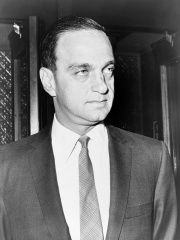
10. Roy Cohn (1927 - 1986)
With an HPI of 49.97, Roy Cohn is the 10th most famous American Lawyer. Her biography has been translated into 23 different languages.
Roy Marcus Cohn ( KOHN; February 20, 1927 – August 2, 1986) was an American lawyer and prosecutor who came to prominence for his role as Senator Joseph McCarthy's chief counsel during the Army–McCarthy hearings in 1954, when he assisted McCarthy's investigations of suspected communists. In the late 1970s and during the 1980s, he became a prominent political fixer in New York City. He also represented and mentored New York City real estate developer and future U.S. President Donald Trump during his early business career. His other clients included New York Yankees baseball club owner George Steinbrenner, Aristotle Onassis, and Mafia bosses Fat Tony Salerno, Carmine Galante, and John Gotti. Cohn was born in The Bronx in New York City and educated at Columbia University. He rose to prominence as a U.S. Department of Justice prosecutor at the espionage trial of Julius and Ethel Rosenberg, where he successfully prosecuted the Rosenbergs leading to their execution in 1953. As a prosecuting chief counsel during the McCarthy trials, his reputation deteriorated during the late 1950s to late 1970s after McCarthy's downfall. In 1986, he was disbarred by the Appellate Division of the New York State Supreme Court for unethical conduct after attempting to defraud a dying client by forcing the client to sign a will amendment leaving him his fortune. He died five weeks later from AIDS-related complications, having vehemently denied that he had HIV.
People
Pantheon has 45 people classified as American lawyers born between 1731 and 1975. Of these 45, 21 (46.67%) of them are still alive today. The most famous living American lawyers include Alan Dershowitz, Robert Bilott, and Lawrence Lessig. The most famous deceased American lawyers include J. Edgar Hoover, Leo Frank, and John F. Kennedy Jr.. As of April 2024, 14 new American lawyers have been added to Pantheon including Robert Bilott, Paul Alexander, and G. Gordon Liddy.
Living American Lawyers
Go to all RankingsAlan Dershowitz
1938 - Present
HPI: 55.24
Robert Bilott
1965 - Present
HPI: 52.66
Lawrence Lessig
1961 - Present
HPI: 48.19
Merrick Garland
1952 - Present
HPI: 48.07
Michael Cohen
1966 - Present
HPI: 47.56
Doug Emhoff
1964 - Present
HPI: 45.32
Kimberlé Williams Crenshaw
1959 - Present
HPI: 44.85
Christopher A. Wray
1966 - Present
HPI: 44.59
John Dean
1938 - Present
HPI: 43.19
Judy Sheindlin
1942 - Present
HPI: 41.23
Robert Lighthizer
1947 - Present
HPI: 41.10
Bryan Stevenson
1959 - Present
HPI: 40.51
Deceased American Lawyers
Go to all RankingsJ. Edgar Hoover
1895 - 1972
HPI: 69.42
Leo Frank
1884 - 1915
HPI: 64.02
John F. Kennedy Jr.
1960 - 1999
HPI: 60.72
Warren Christopher
1925 - 2011
HPI: 57.68
Bill Gates Sr.
1925 - 2020
HPI: 54.52
Paul Alexander
1946 - 2024
HPI: 51.26
Louis Brandeis
1856 - 1941
HPI: 50.53
Roy Cohn
1927 - 1986
HPI: 49.97
Oliver Wendell Holmes Jr.
1841 - 1935
HPI: 49.65
James B. Donovan
1916 - 1970
HPI: 49.53
William Rehnquist
1924 - 2005
HPI: 49.28
Wendell Willkie
1892 - 1944
HPI: 48.45
Newly Added American Lawyers (2024)
Go to all RankingsRobert Bilott
1965 - Present
HPI: 52.66
Paul Alexander
1946 - 2024
HPI: 51.26
G. Gordon Liddy
1930 - 2021
HPI: 45.29
John Dean
1938 - Present
HPI: 43.19
Roscoe Pound
1870 - 1964
HPI: 42.64
Belva Ann Lockwood
1830 - 1917
HPI: 41.07
Griffin Bell
1918 - 2009
HPI: 40.88
Bryan Stevenson
1959 - Present
HPI: 40.51
Carla Anderson Hills
1934 - Present
HPI: 40.22
Tom C. Clark
1899 - 1977
HPI: 37.40
Hazel R. O'Leary
1937 - Present
HPI: 35.95
Maya Harris
1967 - Present
HPI: 35.31
Overlapping Lives
Which Lawyers were alive at the same time? This visualization shows the lifespans of the 24 most globally memorable Lawyers since 1700.

